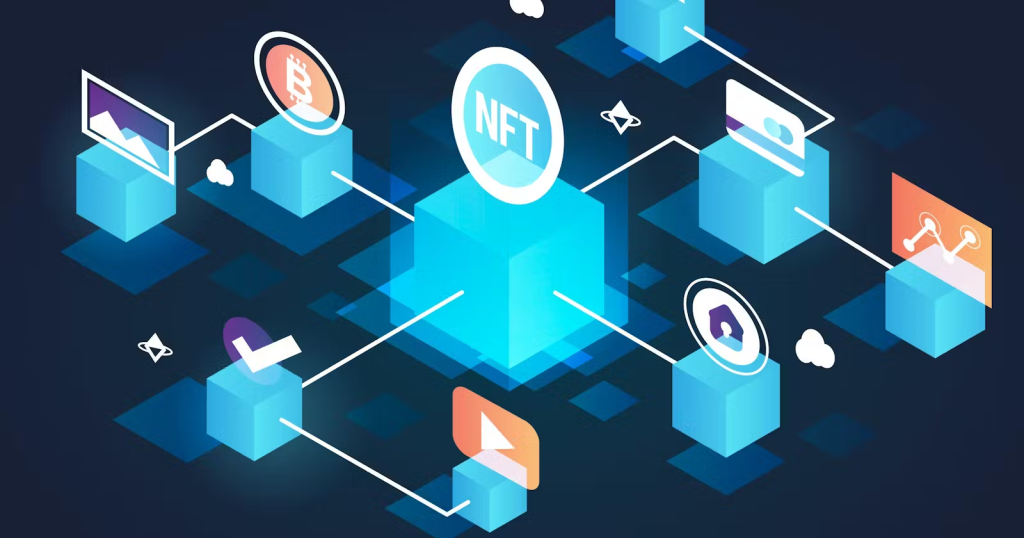Demystifying Blockchain: A Comprehensive Guide to Understanding the Fundamentals

Introduction to Blockchain
Blockchain technology has taken the world by storm in recent years, revolutionizing various industries and promising to transform the way we conduct business. But what exactly is blockchain? In this comprehensive guide, I aim to demystify the fundamentals of blockchain and provide you with a clear understanding of this groundbreaking technology.
The History and Evolution of Blockchain Technology
To truly grasp the significance of blockchain, it’s essential to explore its origins and evolution. The concept of blockchain was first introduced in 2008 by an anonymous person or group of people known as Satoshi Nakamoto. Nakamoto’s whitepaper, titled “Bitcoin: A Peer-to-Peer Electronic Cash System,” laid the foundation for blockchain technology.
Since then, blockchain has evolved beyond its initial application in cryptocurrencies like Bitcoin. It has garnered attention from various industries due to its potential to provide secure, transparent, and decentralized solutions. The technology has grown rapidly, with new use cases emerging across sectors such as finance, supply chain management, healthcare, and more.

How Does Blockchain Work?
At its core, blockchain is a distributed ledger that records transactions across multiple computers. It operates through a decentralized network, eliminating the need for intermediaries like banks or government institutions. But how does it work?
When a transaction occurs, it is grouped with other transactions into a block. This block is then added to a chain of previous blocks, forming a permanent and unalterable record. Each block contains a unique identifier called a hash, which ensures the integrity of the data. The decentralized nature of blockchain ensures that every participant in the network has a copy of the entire blockchain, making it incredibly secure against fraud and tampering.
The Key Components of Blockchain
To understand blockchain fully, it’s crucial to familiarize yourself with its key components. There are three primary components of blockchain:
- Decentralization: Unlike traditional centralized systems, blockchain operates on a decentralized network, where no single entity has control over the entire system. This decentralization ensures transparency, security, and immutability.
- Cryptographic Hashing: Blockchain uses cryptographic hash functions to convert data into a fixed-length string of characters. This hash is unique to each block and ensures the integrity and security of the data.
- Consensus Mechanisms: Consensus mechanisms are protocols that enable participants in the network to agree on the validity of transactions and maintain the integrity of the blockchain. Popular consensus mechanisms include Proof of Work (PoW), Proof of Stake (PoS), and Delegated Proof of Stake (DPoS).
Understanding the Benefits and Potential Applications of Blockchain
Blockchain technology offers numerous benefits and has the potential to revolutionize various industries. Some of the key advantages of blockchain include:
- Transparency and Immutability: Blockchain provides a transparent and immutable record of transactions, making it highly secure against fraud and tampering.
- Enhanced Security: The decentralized nature of blockchain, coupled with cryptographic hashing, ensures that data stored on the blockchain is highly secure.
- Efficiency and Cost Savings: By eliminating intermediaries and streamlining processes, blockchain can significantly reduce costs and improve efficiency in various industries.
The potential applications of blockchain are vast and diverse. From financial services and supply chain management to healthcare and voting systems, blockchain has the potential to revolutionize how we interact and transact.
The Different Types of Blockchain
While blockchain is often associated with cryptocurrencies like Bitcoin, there are different types of blockchain that cater to specific needs. The three main types of blockchain are:
- Public Blockchain: A public blockchain is open to anyone and allows for full transparency and participation. Examples include Bitcoin and Ethereum.
- Private Blockchain: Private blockchains are restricted to a specific group of participants and are often used by businesses to streamline operations and maintain privacy.
- Consortium Blockchain: Consortium blockchains are a hybrid between public and private blockchains. They are governed by a consortium of organizations and are best suited for industries that require both transparency and privacy.
Common Misconceptions about Blockchain
Blockchain technology is often surrounded by misconceptions and myths. Let’s debunk some of the common misconceptions:
- Blockchain is only for cryptocurrencies: While blockchain gained popularity through cryptocurrencies, its potential extends far beyond digital currencies. Blockchain can be applied to various industries and use cases.
- Blockchain is completely anonymous: While blockchain provides pseudonymity, meaning users are identified by their public keys, it is not entirely anonymous. With the right tools and analysis, it is possible to trace transactions back to their origin.
- Blockchain is infallible: While blockchain is highly secure, it is not immune to vulnerabilities. As with any technology, there are potential risks and limitations that need to be considered.
Exploring the Challenges and Limitations of Blockchain
While blockchain holds immense promise, it also faces challenges and limitations. Some of the key challenges include:
- Scalability: Blockchain networks, especially public ones, face scalability issues as the number of transactions increases. This can result in slower transaction processing times.
- Energy Consumption: Proof of Work consensus mechanisms, like those used in Bitcoin, require significant computational power, leading to high energy consumption. This has raised concerns about the environmental impact of blockchain.
- Regulatory and Legal Challenges: The regulatory landscape surrounding blockchain is still evolving, and legal frameworks need to catch up. Uncertainty around regulations can hinder blockchain adoption in certain industries.

The Future of Blockchain Technology
As blockchain technology continues to mature, its future looks promising. Some of the key trends and developments to watch out for include:
- Interoperability: Efforts are underway to enable interoperability between different blockchain networks. This would allow for seamless communication and data exchange between different blockchains.
- Integration with the Internet of Things (IoT): The integration of blockchain with IoT can enhance security, privacy, and data integrity in interconnected devices and systems.
- Government Adoption: Governments around the world are exploring the potential of blockchain for various applications, such as digital identity, voting systems, and supply chain management. Increased government adoption can drive widespread acceptance and use of blockchain technology.





